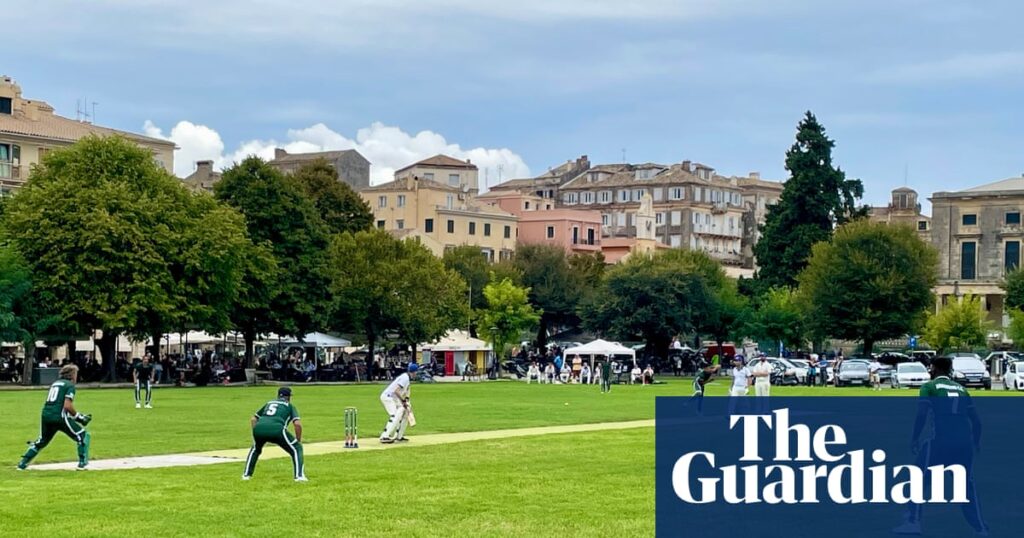The boy had been loitering for about 15 minutes, edging steadily closer to the waiting batters seated around the nonexistent boundary edge, when he eventually plucked up the courage to ask who was winning.
It was the type of uninformed query that ordinarily prompts eye-rolls in cricket’s complex spheres. But the match situation – 60 for one, chasing a victory target of only 86 – made the response quite simple on this occasion. Besides, he was just a kid; an American one, at that. How was he to know that cricket’s ebbs and flows rarely render it condensable into such binary terms?
Buoyed up by the engagement, the child began asking further questions, thrilled by every minor detail he was able to obtain: the ball, the bat, the scoring process. His name, he told us, was Jake. He lived in New York and he was 10 years old. Cricket had been his English father’s favourite sport until dying in a car crash three years ago. Since then, Jake sometimes watches cricket clips on YouTube to try to understand what it is all about.
Now, in the unlikeliest of locations, while on holiday with his mother in Corfu, he had stumbled across real-life cricket in the flesh for the first time. His father’s passion played out in front of him. Jake was entranced.
His were, in fact, just a few of all manner of inquiries asked by confused spectators over the course of the Sunday afternoon – from English families wondering why they had unexpectedly stumbled across a scene reminiscent of home, to baffled east Asians taking photos of a strange sporting spectacle, the likes of which they had never witnessed before.
We were rather difficult to avoid. The match between the tourists, Octopus Cricket Club, and our hosts, Anagennisi Cricket Club, occupied the most prominent of spots in Spianada Square, the green buffer separating the picturesque cobbled Old Town streets from the Old Fortress holding guard over the shimmering Straits of Corfu.
Anyone seeking an outdoor spot for some food in the autumnal sun unwittingly became cricket viewers from their vantage point of the dozens of restaurants and cafes that lined one side of the pitch. Spectators – if that is the correct word for an engagement span that ranged from brief glancers to entranced starers – numbered hundreds.
Over the past few years, Octopus have embarked on season-ending trips to a raft of unlikely European cricketing locations. From France to Croatia, and Malta to Montenegro, a common denominator tends to be the expat-heavy makeup of the opposition. By contrast, Corfu’s unique cricketing history ensures their teams are overwhelmingly homegrown.
The first fixture on the Spianada’s sward took place in 1823 between officers of a Royal Navy ship moored nearby and a team of British soldiers from the local garrison. By the end of the 19th century – with the island no longer a British protectorate – the sport had been taken up by natives and Corfu swiftly became the home of Greek cricket.
These days, the Hellenic Cricket Federation is based on the island, alongside eight of the country’s 11 clubs (the remainder are located in Athens). Enduring Anglo-Corfiot relations ensure a steady stream of English sides make the trip east to sample the local cricketing fare.
One of those was crucial in reinvigorating the sport when it was in danger of dying out on the island – a high-profile fixture between a Corfu XI and a Lord’s Taverners team consisting of celebrities (John Cleese and Nicholas Parsons among them) and former England cricketers (Ken Barrington the most distinguished) in 1978. The match was immortalised in the short film Mad Dogs and Cricketers, narrated by Eric Morecambe, showing the two sides, replete in full whites, arriving at the ground to extraordinary pageantry before taking the field behind a marching band.
Our entrance was rather less ceremonious, although pre-match discussions in 2025 differed little from that 47 years earlier, with the Octopus captain, Sam, informed – just as his slightly more illustrious counterpart Barrington had been – that, in lieu of any visible markers, the boundary would begin “where the grass ends”.
after newsletter promotion
Given the close proximity of the onlooking horde, protective netting was hoisted along the thick line of bushy trees under which the diners sat, and the match was played using a yellow indoor cricket ball – a leather creation with familiar stitched seam, but of almost half the weight of a conventional outdoor ball and a propensity to swing an astronomical amount.
The tourists gratefully exploited it, easing to a nine-wicket win that made up for our earlier narrow defeat in the tour’s opening fixture at the island’s equally scenic Gouvia Marina ground.
As our unbeaten batters walked off the Spianada pitch, and hands were heartily shaken and pictures taken, Jake remained in our midst, absorbing all he could of his father’s treasured sport.
Seeking an opportunity to offload his distinctly worn pair of cheap batting gloves that had contributed to a career average of 8.91, our wicketkeeper Ben offered them to the eager young American, even pulling out a pen and adorning them with an autograph to further reduce their nonexistent value. Jake was elated; an otherwise routine holiday lunch had turned into an unforgettable occasion.
When we passed him on the way back to our hotel a while later, the old gloves with a new lease of life were still firmly strapped to his hands and he was proudly displaying them on a video call to a family member on the other side of the Atlantic, his wide smile showing no sign of fading. Cricket in Corfu. How unexpected.


